Dealer’s Break, Tokes, Customer Service & Other Policies
How to Deal Blackjack: Part 9
Table of Contents
- Markers
- Redemptions
- Fills
- Credits
- Opening a Game
- Closing a Game
- The Road Map, the Rubber Band & the Pencil
- Relief Dealer
- Dealer’s Break
- Customer Service
- Tokes
How to Deal BlackjackFurther Reading
- Part 1: Introduction
- Part 2: Shuffling
- Part 3: Washing Cards, Cutting Deck, Burning Card, Drills
- Part 4: Delivering Cards, Pitching, Tucking Hole Cards, Checking Ace & 10
- Part 5: Handling Cheques, Playing the Game
- Part 6: Take & Pay Procedure
- Part 7: Player’s Actions & Blackjack
- Part 8: Color Up, Dead Game, & Other Procedures
- Part 9: Dealer’s Break, Tokes, Customer Service & Other Policies
- Part 10: Game Security
Did this free course help you?
Click to leave a tip to help keep this resource free!
Markers
Markers are basically a credit line that players are allowed to take.
The player can take out a Marker before or during the hand. Usually, the player will walk up to the table and hand you their player’s card while asking for a “Marker” of a specific amount. Notify the floor by calling out “Marker”, he will come over to your table and that is when you’ll give him the player’s card while telling him the requested amount. If the player hasn’t exceeded their credit limit then the Floorman will gather some lammers and place them on the table near the discard rack.
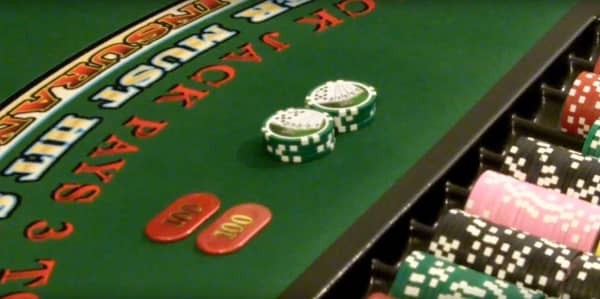
Place the lammers on the left side of the table and then take that indicated amount out of the rack. Prove your stack and then look at the Floor for approval before handing the stack to the player. Place the lammers in the rack and continue dealing the game like normal. 5 to 10 minutes later, the Floor will hand a clipboard with paperwork for the player to look over and sign. Then the Floorman will hand you the same clipboard and you will need to verify the information on the sheet. If everything is correct, sign the paperwork. If not, tell the Floor. Detach the 2nd copy fold it up and drop it in the drop box. You will then initial the table card and place the lammers on a small clipboard then hand it back to the Floor.
Redemptions
Sometimes a player will walk up to your table and tell you “I want to pay off my Marker”. Call over the Floor by saying “Marker Down”. When you get the approval from the Floor, bring the cheques to the center of the table and prove them to the cameras. If the player is paying in cash then convert it to cheques. When the Floor brings over the lammers, place them on the left side of the table. Then you will get paperwork you need to verify; and if everything is correct, then sign off on it. If not, then inform the Floor. Detach the redemption slip, fold it and drop it in the drop box. Initial the table card; put the lammers on the clipboard and then give it back to the Floor. Then put the cheques in the rack.
Fills
When your rack gets low on cheques the Floor will refill it with cheques brought over from the cage. First, the floorman will determined that the game needs more cheques and then he will prepare the paperwork for a fill. The Floor will leave a copy on the table and then they will ask the pit clerk to deliver the paperwork to the cage. The cage will prepare for the fill and then a security guard will bring the fill in a clear locked container. The guard will slide over the individual racks and you can either take each stack out individually or you can tilt the rack and stand up all of the stacks all at once.
Verify the first stack of each denomination. Look at the paperwork that the floor hands you and check to make sure that all of the information is correct. If everything is correct, sign the paperwork; if not, tell the Floor. Give one copy back to the security guard and then take an extra copy and drop it in the drop box. The floor will take the final copy. Place the new cheques into the rack. If there’s a roll of 50 cent pieces, do not bang the roll against the side of the rack to break it open. Instead, peel the ends off and unroll it.
Credits
When the rack gets too full of cheques, the Floor will arrange a credit and the cage will take the surplus. Credits happen less often then fills do. The procedure for a credit is much the same as a procedure for a fill, the only difference is instead of putting chips into the rack you will be taking them out.
Opening a Game
Wait at a locked game until the Pit Boss walks by and opens the lock on the rack. Don’t take the lid off. Wait until the floor tells you that he called the cameras. Then remove the lid and put it in the holder under the table. Take out the closing sheet and check to see if the amounts in the rack are the same as those on the paper. Both you and the floorman are responsible for counting the bankroll and verifying the numbers on the inventory slip. At some casinos, you will be required to prove each denomination above $25. If there is anything wrong, contact the floor immediately. After you’re done with the chips, it’s time to check the cards. Make sure the entire deck is complete. One time, I had two 6’s in a deck and then at another casino I had a 9 missing from the deck.
Closing a Game
At the end of the night, the floor will ask you to bring up the lid, make sure to keep your eye on the rack when you do so. Wait while the Floor calls the cameras before you begin running down the cheques starting from the highest denomination. After all of the denominations are verified, look at the closing sheet to double check all the numbers. If everything is correct then sign the paperwork. Place the closing slip in the corner of the rack and wait for the shift manager to come by, verifying and signing it. After you place the slip back in the rack, lock the lid, and then check to make sure the lid is locked! Clap out; take your toke box to your designated area, and then either go on break or to the pencil.
The Road Map, the Rubber Band & the Pencil
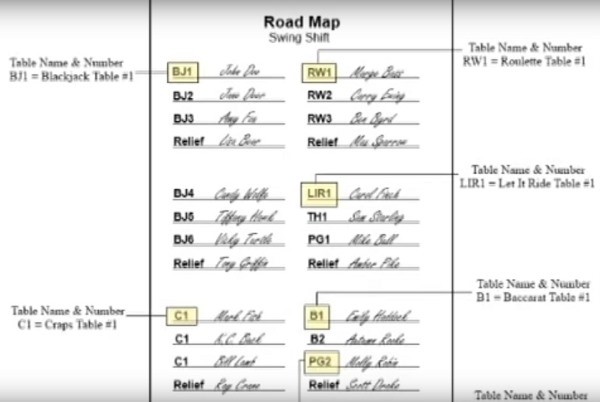
When you come into work, you will need to look at the road map. This map tells you what table you’re going to be on for that shift. It also tells the shift manager where each employee is supposed to be.
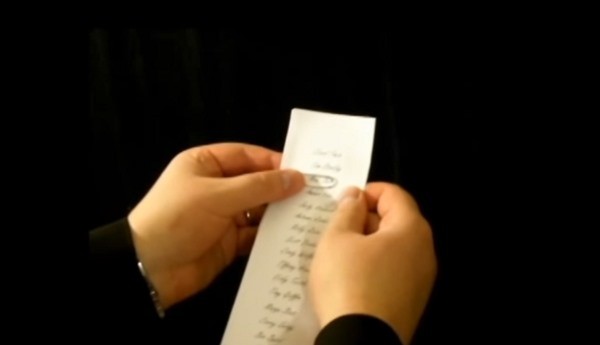
If you are on swing shift then you will go on from a “Road Map” to a “Rubber Band” towards the end of the night when tables start closing. The “Rubber Band” is when the pit boss looks at a list with a paper clip next to the name of each person who needs to go on break next.
Then he will find a dealer, from the crowd who is usually standing in front of him, to go and relieve the other dealer. This will continue until there are no more dealers standing around the pencil. “The Pencil” is the name for the person who handles the road map and the rubber band.
Relief Dealer
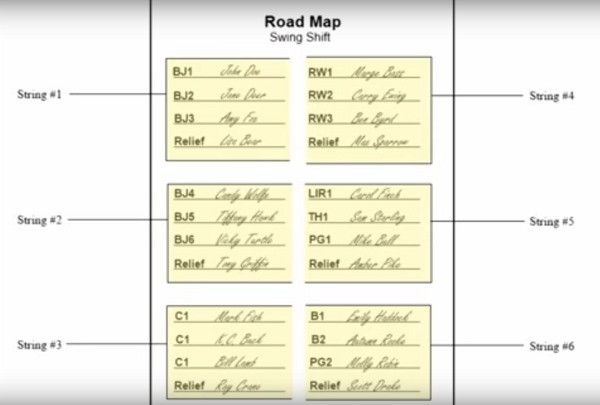
When looking at the road map, you will notice that at the end of every string is a relief dealer.
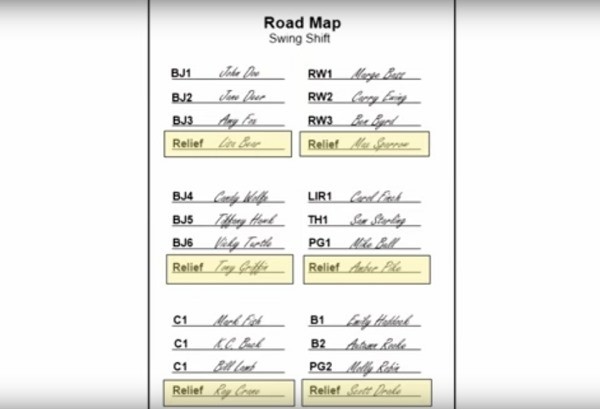
As a relief dealer, you are responsible for giving the dealers on your string their breaks. At the start of the shift, you must check to see if everyone on your sting has shown up to work before you can start giving the dealers their breaks. If there’s a dealer missing or late then the relief dealer must notify management and cover that table. This is an important task for the relief dealer.
Dealer’s Break
Majority of dealers work on their table for an hour and then get a 20 minute break. When the relief dealer arrives at your table they will stand behind your left shoulder and tap it. They will stand there and wait until you’ve completed what you’re doing; this even including shuffling on a dead game. As a relief dealer, it’s a good idea to watch the outgoing dealer deal the last hand. On a single deck game and a finished double deck game, spread the deck. On an unfinished double deck game, hand the deck to the relief dealer. On the shoe, the outgoing dealer will place the shoe in the middle of the table and clear their hands.
To properly clear your hands, clap your hands once, keeping your palms flat, while showing the cameras both sides of your hands.

This proves that you didn’t steal anything. As a side note, always clear your hands whenever you want to touch your body; when covering your mouth to yawn or sneeze; when putting your hands behind your back; or reaching into your pocket. When leaving the table it is good to say “Thank you for playing. John will be your dealer now, good luck.” Exit to the right as the relief dealer comes in from the left. Most incoming dealers will burn a card as they greet the players. If the outgoing dealer didn’t introduce you to the players then introduce yourself.
The reason why you’ll see so many dealers wearing watches is because they want to know when their next break it. If you’ve been on the table for an hour and 15 minutes, notify your floor and he will find someone to tap you out. Never exit the table in the middle of a hand, even if you’re shuffling on a dead game. Keep your conversation with the incoming dealer to just the game. Any personal talk with the incoming dealer, players or floorman after you’ve been tapped out is frowned upon. Once you’ve been tapped off the table you will be expected to go directly to your designated break area. Most casinos forbid dealers from wandering around, going into shops, gambling on slots or table games, and leaving the property. All dealers recognize that they really have a 10 minute break because once the relief dealer taps you out, you finish the hand, clap out and walk out of the pit, down long hallways and stairways to the break room, 5 minutes has already passed. Because of the long walk back, dealers will usually leave for their table 3-5 minutes early. Returning late from breaks will not be tolerated.
Tokes
This is just another word for tips. When a player tips you say thank you. Always pay the players bet first and then pay the dealers toke. When a player splits or doubles down on their hand, then they can do the same with the dealer’s tokes. If the player splits their hand and does not put a second bet out for the dealer then the dealers toke has to go to the 1st hand. After everyone has been paid and all the cards have been picked up then you can pick up your bet.
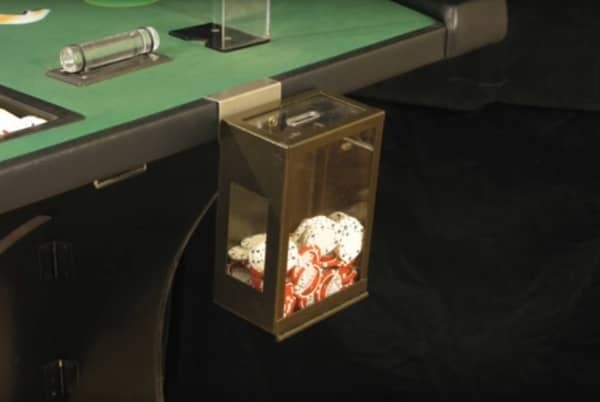
There’ll be a toke box hanging on the edge of the table that you’ll be required to drop your tokes into. You need approval from the floor when coloring up your tokes to a green chip or higher. You don’t need approval when coloring up to a red chip. Never drop a black chip or higher in the toke box. Don’t leave the tokes next to the discard rack waiting to be colored up. If the player gets a blackjack then the dealers tip also gets paid 3 to 2. Never transfer the tokes from hand to hand. Keep in mind that casinos have a maximum amount a player can tip you.
Don’t try to be coy or sly and try to persuade a player to bet for you or give you a tip. This is called hustling a toke and you could be fired for this. In some casinos, if a player gives you an option of playing or dropping a toke, then you must drop the toke. Politely explain to them that once given the option the dealer must drop the toke.
Dealers are not allowed to parlay their tokes; as soon as the tip wins it must be dropped in the toke box. There is a legal way to parlay but it’s risky for the dealer. If the player places the tip on top of their bet and then they win the player can parlay the tip on top of their next bet. Unfortunately, doing it this way means that the tip is still considered the player’s money so if they decide not to give you your tip at the end of the parlay then there is nothing you can do about it.
Sometimes players will take your tip and the winnings. Keep an eye on your tokes to watch and make sure no one picks them up. If someone does just say, “I’m sorry sir, that’s my tip. Thanks”. When a player buys insurance they can also buy enough to cover the dealer’s tokes.
